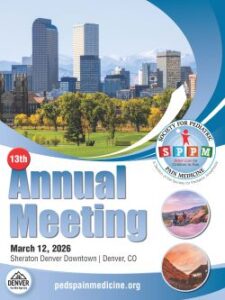A 16‐year‐old patient undergoing an open laparotomy had a T12 epidural placed under standard sterile technique. Because the “loss‐of‐resistance” was not crisp and the resident expressed doubt about catheter placement. In addition to the usual epidural test dose of epinephrine, which of the following published methods can help confirm correct epidural catheter placement in pediatric patients?
Question of the Month – March 2025
Studies have shown that animal assisted therapy can be a beneficial part of multimodal management of many various symptoms, ranging from depression and anxiety to acute and chronic pain. Animal-assisted interventions (AAI) have been known to improve discomfort, stress, anxiety, and overall well-being in children and adults. In addition to subjective reports from patients, biomarkers have been used to investigate a positive response to AAI. All of the following objective measures have been utilized indicating a positive response to AAI except:
Question of the Month – February 2025
An 8-year-old boy is brought to a local health post in rural Nepal by his parents with complaints of intense pain accompanied by swelling in his left wrist preceded by a fall on outstretched hand. The child is crying constantly and as per the Wong-Baker FACES Pain Rating Scale, he has a pain of “Hurts Worst”. The wrist has a dinner fork like appearance. There are no imaging facilities in the health post and neither anesthesia consults or services. The nearest hospital is over eight hours drive away. Given the limited resources, what is the best pain management approach until he is transported to a higher center?
Question of the Month – January 2025
A 30kg 8-year-old male with a history of Wilms tumor s/p right nephrectomy at age 5, postoperative nausea and vomiting (PONV), and burning chronic post-surgical pain (CPSP) at right abdominal incision site with numbness, presents for an elective outpatient umbilical hernia repair. The patient had been requiring opioids and gabapentin for his pain until 8 months ago when it resolved. The anesthetic plan includes preoperative acetaminophen, a general anesthetic including 1mcg/kg fentanyl, and post-induction, pre-incision bilateral rectus sheath blocks with 0.6mL/kg of 0.2% ropivacaine with 1:200k epinephrine. Given the patient’s history, which of the following preoperative medications is best suited to decrease postoperative pain and nausea / vomiting?
Question of the Month – December 2024
A 2-year-old child who weighs 15 kg, undergoes laceration repair of the right index finger in the operating room. The resident does a digital nerve block using 2% lidocaine with epinephrine (1:100,000) and uses 1 ml/side. In the PACU, the anesthesiologists noticed the right index finger appeared pale and less perfused. Which of the following is the most likely cause of this finding?
- « Previous Page
- 1
- 2
- 3
- 4
- …
- 16
- Next Page »
 SPPM 13th Annual Meeting
SPPM 13th Annual Meeting